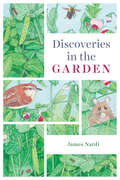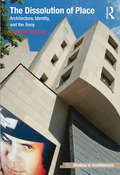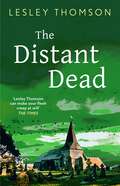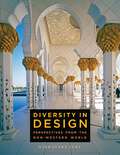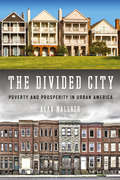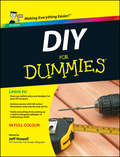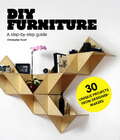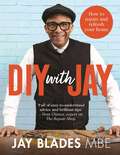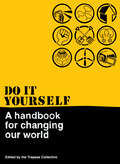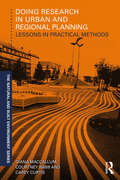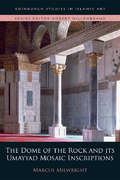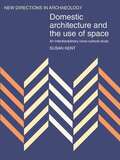- Table View
- List View
Discoveries in the Garden
by James B. NardiEvery square inch of soil is rich with energy and life, and nowhere is this more evident than in the garden. At the tips of our trowels, a sun-driven world of microbes, insects, roots, and stems awaits—and it is a world no one knows better than James Nardi. A charming guide to all things green and growing, Nardi is as at home in prairies, forests, and wetlands as he is in the vegetable patch. And with Discoveries in the Garden, he shows us that these spaces aren’t as different as we might think, that nature flourishes in our backyards, schoolyards, and even indoors. To find it, we’ve only got to get down into the dirt. Leading us through the garden gate, Nardi reveals the extraordinary daily lives and life cycles of a quick-growing, widely available, and very accommodating group of study subjects: garden plants. Through close observations and simple experiments we all can replicate at home, we learn the hidden stories behind how these plants grow, flower, set seeds, and produce fruits, as well as the vital role dead and decomposing plants play in nourishing the soil. From pollinators to parasites, plant calisthenics to the wisdom of weeds, Nardi’s tale also introduces us to our fellow animal and microbial gardeners, the community of creatures both macro- and microscopic with whom we share our raised beds. Featuring a copse of original, informative illustrations that are as lush as the garden plants themselves, Discoveries in the Garden is an enlightening romp through the natural history, science, beauty, and wonder of these essential green places.
Discoveries in the Garden
by James B. NardiEvery square inch of soil is rich with energy and life, and nowhere is this more evident than in the garden. At the tips of our trowels, a sun-driven world of microbes, insects, roots, and stems awaits—and it is a world no one knows better than James Nardi. A charming guide to all things green and growing, Nardi is as at home in prairies, forests, and wetlands as he is in the vegetable patch. And with Discoveries in the Garden, he shows us that these spaces aren’t as different as we might think, that nature flourishes in our backyards, schoolyards, and even indoors. To find it, we’ve only got to get down into the dirt. Leading us through the garden gate, Nardi reveals the extraordinary daily lives and life cycles of a quick-growing, widely available, and very accommodating group of study subjects: garden plants. Through close observations and simple experiments we all can replicate at home, we learn the hidden stories behind how these plants grow, flower, set seeds, and produce fruits, as well as the vital role dead and decomposing plants play in nourishing the soil. From pollinators to parasites, plant calisthenics to the wisdom of weeds, Nardi’s tale also introduces us to our fellow animal and microbial gardeners, the community of creatures both macro- and microscopic with whom we share our raised beds. Featuring a copse of original, informative illustrations that are as lush as the garden plants themselves, Discoveries in the Garden is an enlightening romp through the natural history, science, beauty, and wonder of these essential green places.
Discoveries in the Garden
by James B. NardiEvery square inch of soil is rich with energy and life, and nowhere is this more evident than in the garden. At the tips of our trowels, a sun-driven world of microbes, insects, roots, and stems awaits—and it is a world no one knows better than James Nardi. A charming guide to all things green and growing, Nardi is as at home in prairies, forests, and wetlands as he is in the vegetable patch. And with Discoveries in the Garden, he shows us that these spaces aren’t as different as we might think, that nature flourishes in our backyards, schoolyards, and even indoors. To find it, we’ve only got to get down into the dirt. Leading us through the garden gate, Nardi reveals the extraordinary daily lives and life cycles of a quick-growing, widely available, and very accommodating group of study subjects: garden plants. Through close observations and simple experiments we all can replicate at home, we learn the hidden stories behind how these plants grow, flower, set seeds, and produce fruits, as well as the vital role dead and decomposing plants play in nourishing the soil. From pollinators to parasites, plant calisthenics to the wisdom of weeds, Nardi’s tale also introduces us to our fellow animal and microbial gardeners, the community of creatures both macro- and microscopic with whom we share our raised beds. Featuring a copse of original, informative illustrations that are as lush as the garden plants themselves, Discoveries in the Garden is an enlightening romp through the natural history, science, beauty, and wonder of these essential green places.
Discoveries in the Garden
by James B. NardiEvery square inch of soil is rich with energy and life, and nowhere is this more evident than in the garden. At the tips of our trowels, a sun-driven world of microbes, insects, roots, and stems awaits—and it is a world no one knows better than James Nardi. A charming guide to all things green and growing, Nardi is as at home in prairies, forests, and wetlands as he is in the vegetable patch. And with Discoveries in the Garden, he shows us that these spaces aren’t as different as we might think, that nature flourishes in our backyards, schoolyards, and even indoors. To find it, we’ve only got to get down into the dirt. Leading us through the garden gate, Nardi reveals the extraordinary daily lives and life cycles of a quick-growing, widely available, and very accommodating group of study subjects: garden plants. Through close observations and simple experiments we all can replicate at home, we learn the hidden stories behind how these plants grow, flower, set seeds, and produce fruits, as well as the vital role dead and decomposing plants play in nourishing the soil. From pollinators to parasites, plant calisthenics to the wisdom of weeds, Nardi’s tale also introduces us to our fellow animal and microbial gardeners, the community of creatures both macro- and microscopic with whom we share our raised beds. Featuring a copse of original, informative illustrations that are as lush as the garden plants themselves, Discoveries in the Garden is an enlightening romp through the natural history, science, beauty, and wonder of these essential green places.
Discoveries in the Garden
by James B. NardiEvery square inch of soil is rich with energy and life, and nowhere is this more evident than in the garden. At the tips of our trowels, a sun-driven world of microbes, insects, roots, and stems awaits—and it is a world no one knows better than James Nardi. A charming guide to all things green and growing, Nardi is as at home in prairies, forests, and wetlands as he is in the vegetable patch. And with Discoveries in the Garden, he shows us that these spaces aren’t as different as we might think, that nature flourishes in our backyards, schoolyards, and even indoors. To find it, we’ve only got to get down into the dirt. Leading us through the garden gate, Nardi reveals the extraordinary daily lives and life cycles of a quick-growing, widely available, and very accommodating group of study subjects: garden plants. Through close observations and simple experiments we all can replicate at home, we learn the hidden stories behind how these plants grow, flower, set seeds, and produce fruits, as well as the vital role dead and decomposing plants play in nourishing the soil. From pollinators to parasites, plant calisthenics to the wisdom of weeds, Nardi’s tale also introduces us to our fellow animal and microbial gardeners, the community of creatures both macro- and microscopic with whom we share our raised beds. Featuring a copse of original, informative illustrations that are as lush as the garden plants themselves, Discoveries in the Garden is an enlightening romp through the natural history, science, beauty, and wonder of these essential green places.
Discoveries in the Garden
by James B. NardiEvery square inch of soil is rich with energy and life, and nowhere is this more evident than in the garden. At the tips of our trowels, a sun-driven world of microbes, insects, roots, and stems awaits—and it is a world no one knows better than James Nardi. A charming guide to all things green and growing, Nardi is as at home in prairies, forests, and wetlands as he is in the vegetable patch. And with Discoveries in the Garden, he shows us that these spaces aren’t as different as we might think, that nature flourishes in our backyards, schoolyards, and even indoors. To find it, we’ve only got to get down into the dirt. Leading us through the garden gate, Nardi reveals the extraordinary daily lives and life cycles of a quick-growing, widely available, and very accommodating group of study subjects: garden plants. Through close observations and simple experiments we all can replicate at home, we learn the hidden stories behind how these plants grow, flower, set seeds, and produce fruits, as well as the vital role dead and decomposing plants play in nourishing the soil. From pollinators to parasites, plant calisthenics to the wisdom of weeds, Nardi’s tale also introduces us to our fellow animal and microbial gardeners, the community of creatures both macro- and microscopic with whom we share our raised beds. Featuring a copse of original, informative illustrations that are as lush as the garden plants themselves, Discoveries in the Garden is an enlightening romp through the natural history, science, beauty, and wonder of these essential green places.
The Dissolution of Place: Architecture, Identity, and the Body (Ashgate Studies in Architecture)
by Shelton WaldrepPostmodern architecture - with its return to ornamentality, historical quotation, and low-culture kitsch - has long been seen as a critical and popular anodyne to the worst aspects of modernist architecture: glass boxes built in urban locales as so many interchangeable, generic anti-architectural cubes and slabs. This book extends this debate beyond the modernist/postmodernist rivalry to situate postmodernism as an already superseded concept that has been upended by deconstructionist and virtual architecture as well as the continued turn toward the use of theming in much new public and corporate space. It investigates architecture on the margins of postmodernism -- those places where both architecture and postmodernism begin to break down and to reveal new forms and new relationships. The book examines in detail not only a wide range of architectural phenomena such as theme parks, casinos, specific modernist and postmodernist buildings, but also interrogates architecture in relation to identity, specifically Native American and gay male identities, as they are reflected in new notions of the built environment. In dealing specifically with the intersection between postmodern architecture and virtual and filmic definitions of space, as well as with theming, and gender and racial identities, this book provides provides ground-breaking insights not only into postmodern architecture, but into spatial thinking in general.
The Dissolution of Place: Architecture, Identity, and the Body (Ashgate Studies in Architecture)
by Shelton WaldrepPostmodern architecture - with its return to ornamentality, historical quotation, and low-culture kitsch - has long been seen as a critical and popular anodyne to the worst aspects of modernist architecture: glass boxes built in urban locales as so many interchangeable, generic anti-architectural cubes and slabs. This book extends this debate beyond the modernist/postmodernist rivalry to situate postmodernism as an already superseded concept that has been upended by deconstructionist and virtual architecture as well as the continued turn toward the use of theming in much new public and corporate space. It investigates architecture on the margins of postmodernism -- those places where both architecture and postmodernism begin to break down and to reveal new forms and new relationships. The book examines in detail not only a wide range of architectural phenomena such as theme parks, casinos, specific modernist and postmodernist buildings, but also interrogates architecture in relation to identity, specifically Native American and gay male identities, as they are reflected in new notions of the built environment. In dealing specifically with the intersection between postmodern architecture and virtual and filmic definitions of space, as well as with theming, and gender and racial identities, this book provides provides ground-breaking insights not only into postmodern architecture, but into spatial thinking in general.
The Distant Dead: (The Detective's Daughter Book 8) (The Detective's Daughter #8)
by Lesley ThomsonA woman lies dead in a bombed-out house. A tragic casualty of the Blitz? Or something more sinister? Sixty years later, the detective's daughter unearths the truth... From the number 1 bestselling author of The Detective's Daughter.LONDON, 1940Several neighbours heard the scream of the woman in the bombed-out house. One told the detective she thought the lady had seen a mouse. Another said it wasn't his business what went on behind closed doors. None of them imagined that a trusting young woman was being strangled by her lover.TEWKESBURY, 2020Beneath the vast stone arches of Tewkesbury Abbey, a man lies bleeding, close to death. He is the creator of a true-crime podcast which now will never air. He was investigating the murder of a 1940s police pathologist – had he come closer to the truth than he realised?Stella Darnell has moved to Tewkesbury to escape from death, not to court it. But when this man dies in her arms, Stella, impelled to root out evil when she finds it, becomes determined to hunt down his killer and to bring the secrets he was searching for into the light...Praise for The Detective's Daughter series:'Lesley Thomson gets better and better' Ian Rankin'Cunningly plotted' Mick Herron'One of the most original characters in British crime fiction... Thomson's plots are original and she draws her characters with genuine affection' Sunday Times'In the best traditions of the classic whodunnit, this is Midsomer Murders for grown-ups' Jake Kerridge, Sunday Express'Gloriously well-written... Thomson creates a rich and sinister world that is utterly unique' William Shaw
Diversity in Design: Perspectives from the Non-Western World
by Vibhavari JaniDiversity in Design: Perspectives from the non-Western World addresses the need for a text that encourages evaluation, appreciation, and comparison amongst diverse cultures by incorporating real-world non-Western design traditions into Western context. Each chapter represents a selected non-Western country written by native and resident experts and offers insight into that country's culture, highlighting the ways in which social and physical influences have affected the development of architecture and design. Contributors native to the featured countries offer insight into design philosophies, theories, principles and elements, symbolism, colors, patterns, and textiles from their regions.
The Divided City: Poverty and Prosperity in Urban America
by Alan MallachWho really benefits from urban revival? Cities, from trendy coastal areas to the nation’s heartland, are seeing levels of growth beyond the wildest visions of only a few decades ago. But vast areas in the same cities house thousands of people living in poverty who see little or no new hope or opportunity. Even as cities revive, they are becoming more unequal and more segregated. What does this mean for these cities—and the people who live in them?In The Divided City, urban practitioner and scholar Alan Mallach shows us what has happened over the past 15 to 20 years in industrial cities like Pittsburgh, Detroit, Cleveland, and Baltimore, as they have undergone unprecedented, unexpected revival. He draws from his decades of experience working in America’s cities, and pulls in insightful research and data, to spotlight these changes while placing them in their larger economic, social, and political context. Mallach explores the pervasive significance of race in American cities and looks closely at the successes and failures of city governments, nonprofit entities, and citizens as they have tried to address the challenges of change.The Divided City offers strategies to foster greater equality and opportunity. Mallach makes a compelling case that these strategies must be local in addition to being concrete and focusing on people’s needs—education, jobs, housing and quality of life. Change, he argues, will come city by city, not through national plans or utopian schemes.This is the first book to provide a comprehensive, grounded picture of the transformation of America’s older industrial cities. It is neither a dystopian narrative nor a one-sided "the cities are back" story, but a balanced picture rooted in the nitty-gritty reality of these cities. The Divided City is imperative for anyone who cares about cities and who wants to understand how to make today’s urban revival work for everyone.
DIY For Dummies (For Dummies)
by By Roy Barnhart James Carey Morris Carey Gene Hamilton Katie Hamilton Don R. Prestly Jeff Strong Edited by Jeff HowellThis hands-on guide will help you prepare for and manage simple home repairs and improvements. Jeff Howell (the Sunday Telegraph's DIY columnist) and a host of other experts guide you through the trials and tribulations of DIY, helping you to carry out a range of projects - from fixing a leaky tap to hanging wallpaper - safely, cheaply and with minimum disruption. The full-colour drawings illustrate the step-by-step techniques and the lay-flat binding is perfect for on-the-job DIY advice. DIY For Dummies covers: PART I - Planning Your Home Improvement Projects Chapter 1: Gearing Up for Your DIY Adventures Chapter 2: Being Safe and Prepared Chapter 3: Working with (And within) a Budget PART II - Basic Home Maintenance and Improvement Chapter 1: Repairing Walls and Putting Up Shelves Chapter 2: Windows Don't Have to Be a Pane Chapter 3: Doors: An Open-and-Shut Case Chapter 4: Roofs and Walls Chapter 5: Dealing with Damp Chapter 6: Electrical Repairs and Replacements PART III - Painting and Wallpapering Chapter 1: Planning Your Painting Project Chapter 2: Preparing Surfaces for Painting Chapter 3: Painting, Finishing, and Cleaning Up Chapter 4: Choosing Wallpaper and Preparing Walls Chapter 5: Hanging Wallpaper PART V - Carpentry, Woodworking, and Flooring Chapter 1: Flooring: Keeping a Leg Up on Foot Traffic Chapter 2: Drilling, Driving, Fastening, and Gluing Chapter 3: Understanding the Carpentry Process Chapter 4: Finishing Wood PART VI - Plumbing Chapter 1: The Plumbing System in Your Home Chapter 2: Heating, Ventilating, and Insulating Your Home Chapter 3: Plumbing Materials and Tools Chapter 4: Unblocking a Sink or Bath Drain Chapter 5: Unblocking and Fixing a Toilet Chapter 6: Fixing a Dripping Tap
DIY For Dummies
by Jeff HowellThis hands-on guide will help you prepare for and manage simple home repairs and improvements. Jeff Howell (the Sunday Telegraph's DIY columnist) and a host of other experts guide you through the trials and tribulations of DIY, helping you to carry out a range of projects - from fixing a leaky tap to hanging wallpaper - safely, cheaply and with minimum disruption. The full-colour drawings illustrate the step-by-step techniques and the lay-flat binding is perfect for on-the-job DIY advice. DIY For Dummies covers: PART I - Planning Your Home Improvement Projects Chapter 1: Gearing Up for Your DIY Adventures Chapter 2: Being Safe and Prepared Chapter 3: Working with (And within) a Budget PART II - Basic Home Maintenance and Improvement Chapter 1: Repairing Walls and Putting Up Shelves Chapter 2: Windows Don't Have to Be a Pane Chapter 3: Doors: An Open-and-Shut Case Chapter 4: Roofs and Walls Chapter 5: Dealing with Damp Chapter 6: Electrical Repairs and Replacements PART III - Painting and Wallpapering Chapter 1: Planning Your Painting Project Chapter 2: Preparing Surfaces for Painting Chapter 3: Painting, Finishing, and Cleaning Up Chapter 4: Choosing Wallpaper and Preparing Walls Chapter 5: Hanging Wallpaper PART V - Carpentry, Woodworking, and Flooring Chapter 1: Flooring: Keeping a Leg Up on Foot Traffic Chapter 2: Drilling, Driving, Fastening, and Gluing Chapter 3: Understanding the Carpentry Process Chapter 4: Finishing Wood PART VI - Plumbing Chapter 1: The Plumbing System in Your Home Chapter 2: Heating, Ventilating, and Insulating Your Home Chapter 3: Plumbing Materials and Tools Chapter 4: Unblocking a Sink or Bath Drain Chapter 5: Unblocking and Fixing a Toilet Chapter 6: Fixing a Dripping Tap
DIY Furniture: A Step-by-Step Guide
by Christopher StuartFeaturing 30 designs by leading designer-makers from around the world DIY Furniture shows you how to use simple techniques to make stunning designer furniture from scratch. Along with designs for seating and storage, the book also features projects for making your own bed, wardrobe, lighting and garden furniture. Each project features hand-drawn diagrams with short, easy-to-follow instructions on how to build the piece.All the projects can be easily assembled using common materials to be found at the local hardware store, allowing the reader to create unique designer pieces at a fraction of the normal cost. Brief biographies of all the featured designers are included at the end of the book.
DIY Furniture 2: A Step-by-step Guide
by Christopher StuartFeaturing 30 new designs by leading designer-makers from around the world, DIY Furniture 2 builds on the international success of the previous title, showing you step-by-step how to make unique designer furniture.Including both conceptual objects and modern designs, the book showcases innovative processes using readily available materials commonly found at the local hardware store. Each project features diagrams with short, easy-to-follow instructions on how to build the piece.The projects range from novice to experienced, allowing the reader to start where they are comfortable and work towards more difficult projects as they gain knowledge, familiarity with tools and confidence.The designs in this book will have you thinking about common materials in a whole new way!
Diy. On a Budget.: The very best tried-and-tested ideas for your home
by Toni Trevillion'We love Diy. On a Budget. - it has the best DIY and decorating hacks and tips ever! ' Kate and Kay Allinson, Pinch of Nom Transform your home without breaking the bank - everything you need to know before starting your own DIY project. Dreaming of panelling but don't know where to start? Looking for ways to refresh your tired kitchen? Brimming with ideas but have a limited budget? The official Diy. On a Budget. handbook from the founder of the 2 million strong online community will give you all the tools, tips and inspiration you need to re-decorate rooms and homes of all sizes, no matter how big or small your budget. Your essential DIY handbook includes: - Before You Start: Toni's tips on what you need to know before you start painting, tiling, laying floors or upcycling furniture, including the essential kit to own. - Room by Room: the best ideas to decorate your Kitchen, Living Room, Bathroom, Bedroom, Utilities and Storage, Hall and Landing, even Nooks and Crannies. - Keep to Budget: A must-have budget planner to keep your transformation on track. - Help is on Hand: When things go wrong! Top tips from Toni on fixing mistakes, drawing in useful advice from the community. Make your home renovation picture perfect and wallet-friendly with Diy. On a Budget. 'Diy. On a Budget. is crammed full of decor hacks, tips and tricks to make small tweaks or big changes to your home.' The Observer
DIY with Jay: How to Repair and Refresh Your Home
by Jay BladesLearn how to create a home you'll love with this illustrated full-colour practical guide from the Sunday Times bestselling author and star of the hit primetime show The Repair Shop, Jay Blades.Even if you've never put up a shelf, repainted a room or fixed a dripping tap, you'll soon have the confidence and skills to tackle these DIY jobs and many more with Jay's help! With tales of his own do-it-yourself escapades and plenty of inspiration from his favourite home fixes, this accessible and entertaining guide will give you all the knowledge you need to choose the right wall plugs, revamp those old dining chairs and give your bathroom a whole new lease of life without breaking the bank.DIY with Jay is a room-by-room guide to doing it yourself: from laying new kitchen flooring and building your own BBQ to making new sofa covers and choosing the right bedroom vibe for the best night's sleep. Based on his own many years of experience as a furniture restorer, this manual provides tips and problem solvers for anyone hoping to embark on a new DIY journey. With tools, terms and expert advice, you'll be able to give new life to your home for years to come.
Do It Yourself: A Handbook For Changing Our World
by Trapese CollectiveDo you really want to change the world? If the answer is YES, then this book shows you how. Ethical consumerism is now big business. But leading a sustainable and truly radical life encompasses a whole variety of things that challenge the mainstream. This book shows how we can make real changes to the way we live. In simple steps, it describes how you can create sustainable and equitable ways of living that can help transform not just your own life, but the culture around you. The book weaves together analysis, stories and experiences. It combines in-depth analytical chapters followed by easy to follow 'How to Guides' with practical ideas for change. Taken together, these small steps can move us towards taking back control of our lives from governments and corporations.
Dogs at Home
by Marianne Cotterill James MerrellA house without a dog is not a home. Meet Gaspard the Dalmatian who hates the London rain but loves a good sing along to The Antiques Roadshow; jet-setting Rufus and Marni, two wire-haired dachshunds who can often be found sniffing out vintage finds in Brooklyn’s flea markets; or Jack Russell Ollie who enjoys the views of the Eiffel Tower from his gorgeous Parisian apartment. Featuring big dogs, small dogs, countless rescue dogs and even a few champions, these stunning photographs celebrate the joyful, cherished, chaotic, but never dull life that’s lived with dogs. Each image perfectly capturing that unique relationship between us humans and our beloved pets.
Doing Research in Urban and Regional Planning: Lessons in Practical Methods (Natural and Built Environment Series)
by Diana MacCallum Courtney Babb Carey CurtisDoing Research in Urban and Regional Planning provides a basic introduction to methodology and methods in planning research. It brings together the methods most commonly used in planning, explaining their key applications and basic protocols. It addresses the unique needs of planners by dealing with concerns which cut across the social, economic, and physical sciences, showing readers how to mobilise fresh combinations of methods, theoretical frameworks and techniques to address the complex needs of urban and regional development. It includes illustrative case studies throughout to help planning students see how methods can be operationalised on the ground and connect research with urban and regional planning practice to build foundations for action. The book pays attention to contemporary trends – such as the growth in information technology, and general shifts in urban and environmental governance – that are affecting the practicalities and protocols of doing planning research. Doing Research in Urban and Regional Planning also encourages ethical reflection and discusses the ethical issues specific to planning research. Each chapter begins with a chapter outline with learning outcomes and concludes with take-home messages and suggested further readings. It also suggests a range of learning activities and discussion points for each method.
The Dome of the Rock and its Umayyad Mosaic Inscriptions (Edinburgh Studies in Islamic Art)
by Marcus MilwrightLocated on the Temple Mount in Jerusalem, the Dome of the Rock was constructed at the end of the seventh century by order of caliph ‘Abd al-Malik. This seminal structure has been much studied but no definitive interpretation yet exists of the meanings conveyed by the Dome at the time of its completion. The recovery of meaning is complicated by the paucity of primary written sources relating to the construction phases of the building and the motivations of its patron. This book concentrates on the most important surviving primary text, the long mosaic inscription running around the interior. Comprising a dedication and date (72/691-92) and material of a religious nature, the mosaic inscription provides vital evidence for the reconstruction of the meanings and functions of the Dome of the Rock. The detailed study of the mosaics helps to place them in the context of Late Antique monumental writing, particularly in Greek. The book makes use of contemporary Islamic coins, graffiti, and other inscribed objects in order to examine the Dome of the Rock in the relation to the ideological concerns of the Umayyad elite during and after the second Civil War.
Domestic Architecture And The Use Of Space: An Interdisciplinary Cross-cultural Study (New Directions In Archaeology Ser.)
by Susan Kent Norman Yoffee Wendy Ashmore Francoise Audouze Cyprian Broodbank Tim Murray Colin Renfrew Nathan Schlanger Andrew Sherratt Timothy TaylorDomestic Interiors: Representing Homes from the Victorians to the Moderns
by Georgina DowneyIn the act of enclosing space and making rooms, we make and define our aspirations and identities.Taking a room by room approach, this fascinating volume explores how representations of domestic space have embodied changing spatial configurations and values, and considers how we see modern individuals in the process of making themselves 'at home'. Scholars from the US, UK and Australasia re-visit and re-think interiors by Bonnard, Matisse, Degas and Vuillard, as well as the great spaces of early modernity; the drawing room in Rossetti's house, hallways in Hampstead Garden Suburb, the Paris attic of the Brothers Goncourt; Schütte-Lihotzky's Frankfurt Kitchen, to explore how interior making has changed from the Victorian to the modern period.From the smallest room - the bathroom - to the spacious verandas of Singapore Deco, Domestic Interiors focuses on modern rooms 'imaged' and imagined, it builds a distinct body of knowledge around the interior, interiority, representation and modernity, and creates a rich resource for students and scholars in art, architecture and design history.
Domestic Sluttery: Cheat Your Way To The Good Life
by Sian MeadesMany women would love to have the domestic goddess thing nailed, to waft around vintage fairs and antique markets for collectable items to furnish their houses with, and to be able to spend all day preparing the ultimate dinner party. But quite frankly women are too busy – working, going out and having fun – to make their lives ‘just so’. But that doesn't mean that their homes aren't important; their homes are as precious as their time The Domestic Sluttery website was created to show women that it is possible to have a gorgeous home while unapologetically cutting a few corners. The book is a logical expansion from the blog, full of lifestyle tips and with a more in-depth look at home interiors (Hiding the Evidence, Design Porn etc.); food and drink (e.g., Veggie not Virtuous, Baking for Beginners); style and beauty (Fashion Lust, Crafty Clothes etc.); and living (e.g., Fabulous and Thrifty, Sluttery Travels). The word ‘sluttery' is used deliberately. It goes back to the traditional use of the word 'slut’ – being slovenly, a little messy – which can be a very good thing; it's freeing. This isn’t a lifestyle guide for Stepford Wives. those kind of aspirations aren't realistic any more. Instead, Domestic Sluttery offers an aspiration to live life to the full but with permission to make mistakes, to accept that you’re not perfect. Instead of compromising on fun, Sian Meades and her domestic sluts will teach you the quick and easy ways to do domestication on the hop. And will reveal how to make a damn good cocktail!
Domestic Space in Britain, 1750-1840: Materiality, Sociability and Emotion (Material Culture of Art and Design)
by Freya GowrleyBetween 1750 and 1840, the home took on unprecedented social and emotional significance. Focusing on the design, decoration, and reception of a range of elite and middling class homes from this period, Domestic Space in Britain, 1750-1840 demonstrates that the material culture of domestic life was central to how this function of the home was experienced, expressed, and understood at this time. Examining craft production and collection, gift exchange and written description, inheritance and loss, it carefully unpacks the material processes that made the home a focus for contemporaries' social and emotional lives.The first book on its subject, Domestic Space in Britain, 1750-1840 employs methodologies from both art history and material culture studies to examine previously unpublished interiors, spaces, texts, images, and objects. Utilising extensive archival research; visual, material, and textual analysis; and histories of emotion, sociability, and materiality, it sheds light on the decoration and reception of a broad array of domestic spaces. In so doing, it writes a new history of late eighteenth- and early nineteenth-century domestic space, establishing the materiality of the home as a crucial site for identity formation, social interaction, and emotional expression.
